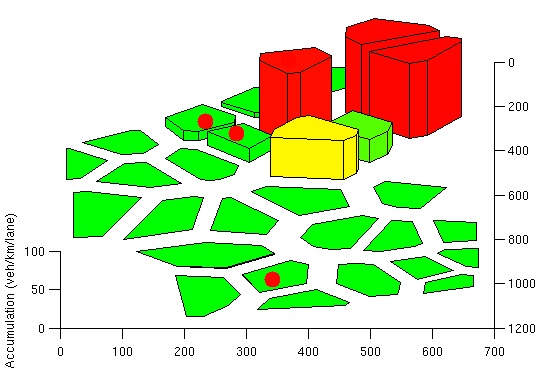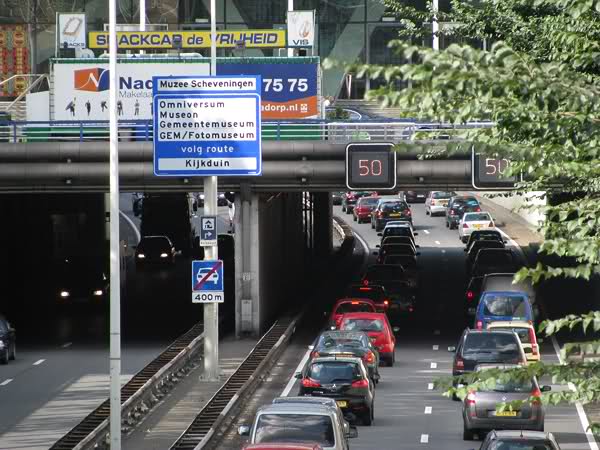A combination of controlled entry and routing can prevent urban traffic congestion, says Dr Victor Knoop. He presented his new regional traffic model in Washington.
The consequences of not regulating the morning traffic into a major city could be witnessed in The Hague on a daily basis: long queues waiting for traffic lights, blocked crossings and bicycles waving their way through the thicket of stranded cars.
Two options a municipality has to control the incoming traffic are stoplights at the city’s main entry roads and routing the traffic to other, less busy entry points.
Since it is impractical to simulate traffic flow down to street level, Dr Victor Knoop (transport and planning at Civil Engineering and Geo Sciences) developed a courser, regional traffic model that works with blocks a few kilometres long and wide.
For a practical demonstration he fitted the city of The Hague into his model and had the morning rush hour simulated. The results, as shown on his website, compare A. no control with B. controlling the inflow by gating and C. control by gating and routing. Traffic density (vehicles per kilometre) is colour-coded and displayed as 3D bar graphs.

Routing in combination with gating results in earlier but less intensive traffic peaks. Gridlocks (severe congestions), such as in the uncontrolled case, are prevented.
The simulation works with the Macroscopic Fundamental Diagram (MFD) method. This is an empirically observed relationship between traffic flow and traffic density at the level of an urban region.
In his presentation, Knoop remarks that according to the model, gating without routing will still lead to gridlocks, which strikes him as unrealistic.
In other words, Knoops model is work in progress, as is the development of more sophisticated methods of traffic control than just gating and routing.
–> To the Transport Research Board TRB Conference 2014
Article on Network Transmission Model



Comments are closed.